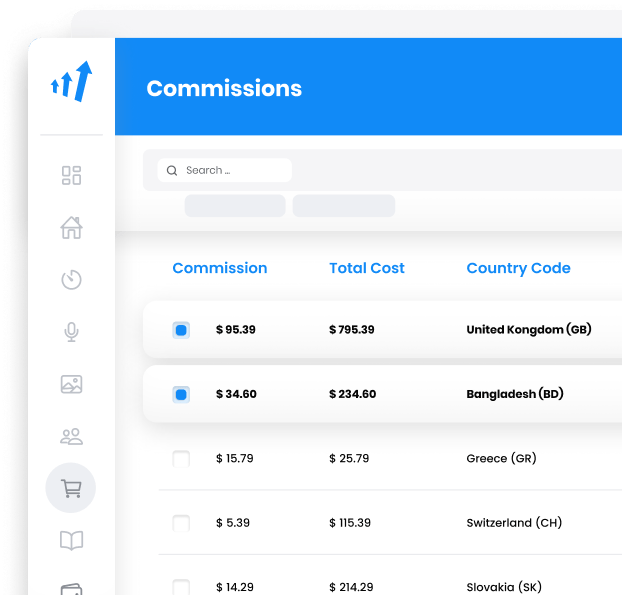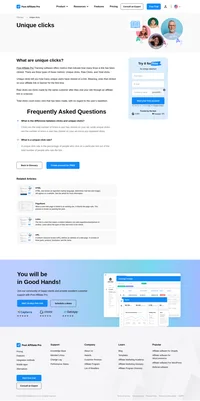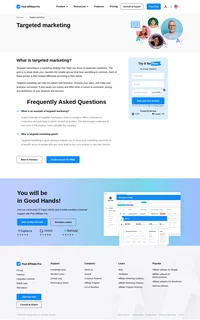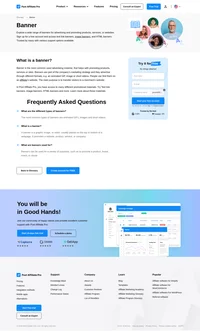Definition of “Hit” in Affiliate Marketing
In the realm of affiliate marketing, a “hit” refers to a single request made to a web server, typically initiated by a visitor’s interaction with a website. This interaction could be the result of a user clicking on a link, loading a web page, or accessing any resource on a website. Hits are fundamental metrics used to gauge web traffic, though they are not the most reliable indicator of website success or engagement.
This is because hits count every request for a file on a page, rather than unique visits to a website. For instance, a page with multiple images, scripts, and other files can generate multiple hits for a single page view.
How Hits Differ from Other Metrics
- Page Views: In contrast to hits, which count each file request, page views refer to the number of times a web page is displayed. A single page view can result in multiple hits if the page contains several files such as images, CSS files, and JavaScripts.
- Unique Visitors: This metric tracks the number of distinct individuals visiting a site during a specified period, providing insight into how many people are actually engaging with the site. It is a more precise measure of a site’s reach than hits.

The Role of Hits in Affiliate Marketing
While hits provide a broad measure of activity on a website, affiliate marketers often focus on other metrics to evaluate performance more accurately. Understanding hits can help affiliates grasp the flow of traffic, but should be supplemented with metrics like conversions, sales, and engagement to fully assess the effectiveness of marketing strategies.
Hits and Affiliate Marketing Programs
In affiliate marketing, hits are used to track the initial engagement with affiliate links. When a user clicks an affiliate link, it generates a hit on the server hosting the offer. This marks the first step in the tracking process that eventually leads to conversions and sales, which are the ultimate goals of affiliate programs. However, relying solely on hits can be misleading, as high hit counts do not necessarily equate to high conversion rates or sales.
Measuring Success Beyond Hits
Affiliate Sales and Commission
The success of an affiliate marketing campaign is typically measured by the sales generated and the commission earned rather than the number of hits. Affiliates earn a commission when users complete a purchase through the affiliate’s unique link, which is a more meaningful metric than the sheer volume of hits. This is because it directly correlates to revenue and effectiveness of the marketing efforts.
Tools and Software for Tracking
Affiliate marketers utilize specialized software tools to track hits, clicks, and conversions. These tools provide detailed analytics that help affiliates adjust their strategies for better results. Understanding the relationship between hits and conversions is crucial for optimizing affiliate campaigns. Popular tools include Google Analytics, ClickMeter, and Post Affiliate Pro, which offer insights into traffic sources, user behavior, and conversion rates.
Types of Affiliate Marketing Related to Hits
Unattached Affiliate Marketing
In this model, affiliates have no connection to the product being promoted. Hits are generated primarily through paid advertising techniques like PPC (pay-per-click) campaigns. Affiliates aim to generate as many hits as possible, hoping to convert these into sales without engaging in direct marketing. This method is heavily reliant on driving high traffic volumes through strategic ad placements.
Related Affiliate Marketing
Affiliates in this category promote products related to their niche, even if they do not use them personally. Hits are generated through content marketing and SEO, driving traffic to affiliate links embedded in blog posts or videos. This approach often results in more targeted traffic, as the audience is already interested in the niche.
Involved Affiliate Marketing
Here, affiliates have a personal connection to the products they promote, often using them personally. Hits in this context are more meaningful, as they are likely to result in higher conversion rates due to the trust and credibility established by the affiliate. This model is effective in building long-term relationships with consumers.
Common Channels Generating Hits in Affiliate Marketing
Blogs and Content Sites
Bloggers use hits to measure the traffic generated by their content. By embedding affiliate links within blog posts, they aim to convert hits into actionable leads or sales. High-quality, engaging content can improve the likelihood of conversions from hits.
Social Media Platforms
Hits from social media are tracked when users click on affiliate links shared on platforms like Instagram, Facebook, or Twitter. These hits are crucial for measuring the effectiveness of social media campaigns in driving traffic to affiliate offers. Engaging posts and strategic use of hashtags can enhance visibility and generate more hits.
Email Marketing
Affiliate marketers use email campaigns to generate hits by including links to affiliate products. The challenge lies in converting these hits into sales, which requires compelling content and strategic targeting. Personalization and segmentation of email lists can increase engagement and conversion rates.
Challenges and Considerations
The Misleading Nature of Hits
High numbers of hits can be misleading as they do not necessarily correlate with high engagement or sales. A page with many components may register high hits, but that doesn’t mean it is converting visitors into customers. Thus, it’s important to analyze other performance indicators alongside hits.
Optimizing for Conversions
To truly benefit from the traffic generated by hits, affiliates must focus on optimizing the user journey from click to conversion. This involves improving landing page design, call-to-action clarity, and overall user experience. Testing different strategies and layouts can help identify what works best for maximizing conversions.
Understanding the Target Audience
For hits to translate into sales, affiliates need to understand their target audience’s needs and preferences. Tailoring content to resonate with potential customers increases the likelihood that hits will become conversions. Conducting market research and using analytics tools can provide valuable insights into audience behavior and preferences.
Frequently Asked Questions
Is there any difference between a request and hit?
A “request" is a single request for a file from a web server. A "hit" is a request for any file from a web server. Hits are often used to measure the amount of traffic a website gets.
How can I check server hits?
There are a few ways to check server hits such as checking the server's access logs, accessing web server analysis tools, and using traffic monitoring tools.
Discover the importance of unique clicks in affiliate marketing with Post Affiliate Pro. Learn how to track unique users interacting with your links and optimize your campaigns effectively. Explore the differences between unique, raw, and total clicks to enhance your affiliate strategy. Visit now for expert insights and support!
Discover the power of targeted marketing with Post Affiliate Pro. Learn how to effectively segment your clientele into specific groups to attract new business, increase sales, and optimize your marketing efforts. Save time and resources by understanding the unique needs of each customer segment. Explore more on our comprehensive glossary page.
Discover the power of banners in affiliate marketing with Post Affiliate Pro. Learn how these versatile advertising tools, from GIFs to videos, drive traffic to merchants' sites and boost your marketing strategy. Access a variety of promotional materials like text link and HTML banners to enhance your campaigns. Visit to explore more!
Discover how to maximize your revenue by attracting the right audience with targeted traffic. Learn to manage site visitors effectively and ensure only those interested in your products and industry find their way to your page. Visit Post Affiliate Pro to explore more about optimizing your online presence!










